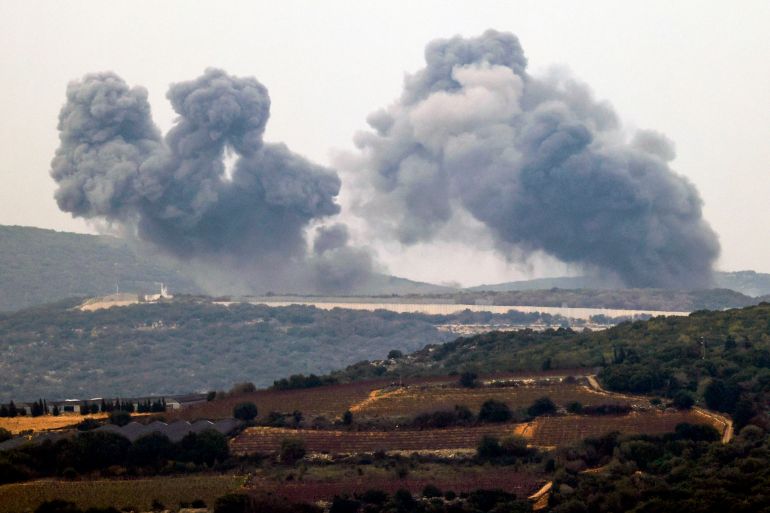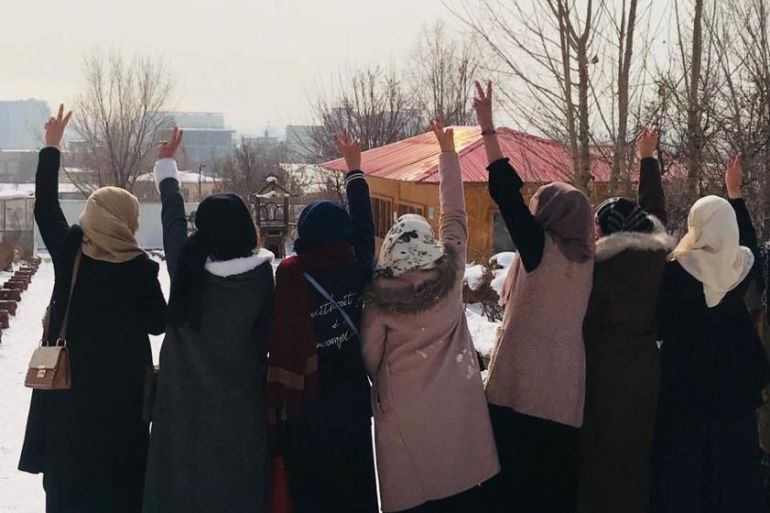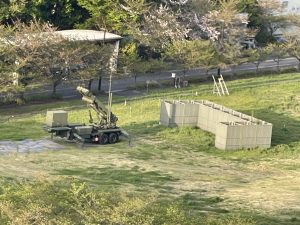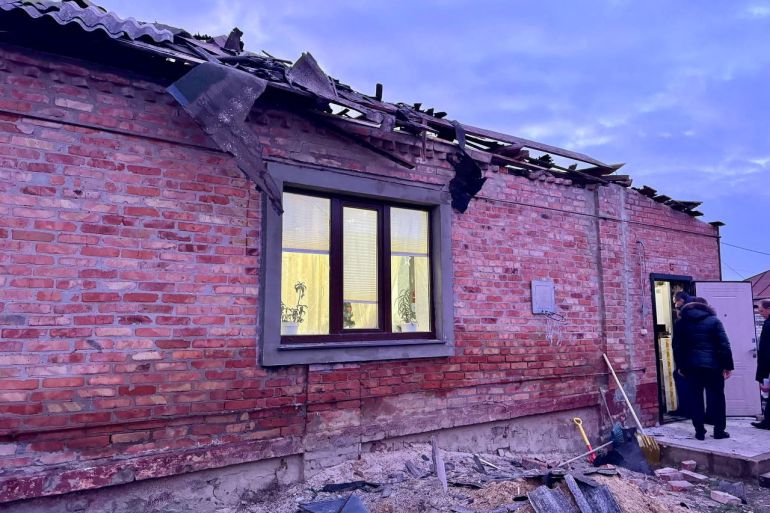1 January 2024
Israel-Hamas war: List of key events, day 85
Source Link

Here’s how things stand on Saturday, December 30, 2023:
Latest updates and human impact
- Israeli ground forces and tanks are pushing into the eastern, southern and northern outskirts of the Bureij refugee camp in central Gaza. But they have not yet reached the western side and Hamas fighters are resisting the incursion.
- Israel’s bombardment of southern Gaza has intensified with the Israeli army, navy and air force targeting multiple locations in Khan Younis and Rafah. Israel has hit residential areas and civilian infrastructure, resulting in a large number of deaths. According to the United Nations, between Thursday and Friday afternoon, 187 Palestinians were killed and 312 wounded in these attacks.
- The Palestinian Red Crescent Society (PRCS) released video footage of its emergency ambulance crews evacuating seriously wounded children in Khan Younis city following an attack on a residential apartment building amid continuing Israeli bombing raids.
- Israel’s military has claimed to have destroyed a network of tunnels and a hideout belonging to Yahya Sinwar, Hamas’s leader in Gaza.
- Israel’s military says two more Hezbollah sites have been hit in southern Lebanon, after an Israeli official at the United Nations Security Council on Friday promised “full-scale war” on Hezbollah if attacks on Israel’s north continue.
- Philippe Lazzarini, the head of the UN Palestine relief agency (UNRWA), has accused Israeli officials and media outlets of “creating a stream of baseless misinformation” about gaps in aid deliveries to Gaza. His comments come amid Israeli attacks on aid convoys.
- In Gaza, at least 21,507 people have been killed and 55,915 injured in Israeli attacks since October 7. The revised death toll from Hamas’s attack on Israel stands at 1,139.
On the Gaza ‘shoah’ and the ‘banality of evil’
Haidar Eid

In February 2008, Matan Vilnai, then Israel’s deputy defence minister, threatened the Palestinians of Gaza with a “holocaust”. “They will bring upon themselves a bigger shoah because we will use all our might to defend ourselves,” he said in an interview for the Israeli army radio station, using the Hebrew word for holocaust.
It is important to recall this statement today as activists and analysts are being berated for comparing what is happening now to the people of Gaza to what European Jews suffered at the hands of the Nazis last century.
The word “shoah” is never used in Israel outside discussions of the Nazi extermination of Jews during World War II. Many Israelis, especially Zionists, have a serious problem with people using it to describe other genocides.
Yet, the deputy minister decided to threaten the Palestinians with a “shoah”. It is clear he knew what he was referring to and he did not mince his words.
In December 2008, 10 months after Vilnai’s interview, the Israeli occupation forces launched a massive military onslaught on the Gaza Strip that lasted 22 days. Israel killed more than 1,400 people in this onslaught, the overwhelming majority of whom were children and women.
At the time, no one referred to the prohibited word. No one dared to compare the military operation, grotesquely dubbed “Cast Lead”, to the “shoah”.
The so-called “international community” did nothing to protect Palestinian civilians. Just as it did nothing in the late 1930s, when it stood aside and watched idly, refusing to give shelter to the innocent civilians fleeing slaughter at the hands of the Nazi monster regime.
The Nazi war criminals acted with full impunity for a long period of time, relying on the support of ordinary Germans and the indifference of the “international community”, who facilitated what the late philosopher Hannah Arendt called “the banality of evil”.
Israeli Military Reveals Tunnel It Says Hamas Built for Large-Scale Attack
Dov Lieber
TAP FOR SOUNDThe Israeli military said it’s the largest underground passageway, about 2½ miles long, that they have found so far built by Hamas in Gaza. WSJ’s Dov Lieber reports from the Israel-Gaza border, giving an inside look at the tunnel. Photo: Alexander Lowe/The Wall Street Journal
GAZA—A quarter of a mile from a civilian border crossing between Israel and northern Gaza lies what Israel’s military says is the largest tunnel discovered in the enclave. It is large enough that large vehicles can drive through it, and yet, until recently, Israel didn’t know the tunnel reached right up to its border.
Israeli troops uncovered the tunnel exit buried under a sand dune a few weeks ago. Israeli officials believe that the tunnel, up to 50 meters deep at points, and 2½ miles long, took years and millions of dollars to build and was meant to facilitate a large-scale attack on Israel.
The U.S. and Israel Need to Take Iran On Directly
Naftali Bennett
TAP FOR SOUNDThe Iran-backed Houthi rebel group in Yemen has been ramping up attacks on Israeli and U.S. targets in retaliation for Israel’s strikes in Gaza. WSJ’s Shelby Holliday reports on the group’s rise in Yemen, and the threats it’s currently posing in the Middle East. Photo: Mohammed Huwais/Agence France-Presse/Getty Images
Hamas and Islamic Jihad, backed by Iran, massacred 1,200 Israelis on Oct. 7, resulting in full-scale war in Gaza. Hezbollah, also backed by Iran, has launched more than 1,000 rockets at northern Israeli communities since then, risking regional conflagration. Iran-backed Houthis in Yemen are attacking and hijacking ships in the Suez canal, threatening one of the world’s most vital waterways. Militias in Syria and Iraq, with support from Iran, are attacking U.S. bases and—as always—threatening moderate Arab nations.
Notice a pattern? The Iranian regime is at the center of most of the Middle East’s problems and much of global terror. Yet inexplicably, almost nobody is touching it. For the past 45 years, the regime has been the source of endless war, terror and suffering throughout the world. I’ve come to realize that enough is enough. The evil empire of Iran must be brought down.
As a young officer in Israel’s special forces, I spent a great deal of time fighting Hezbollah, Iran’s Lebanese proxy. I studied its methods and vulnerabilities. I targeted its commanders and fighters. In 2006, as a reservist, I commanded a special search and destroy team in the second Lebanon War.
Only after that war, in which I lost my best friend, did I begin to realize our great folly. We were fighting the wrong battle, and that is exactly what Iran wants us to do.
The State of South Asia in 2023
Mimrah Abdul Ghafoor

2023 has been an eventful year for South Asia. Many leaders in the region were gearing up for elections this year or next, leading to a flurry of campaigns and electoral activities. Amidst these political developments, the region continued to face challenges ranging from economic and political instability to humanitarian crises.
A standout development has been India’s ascent as a major global power. From becoming the first country to land a spacecraft near the moon’s south pole under its Chandrayaan-3 mission and its recently concluded presidency of the G-20 to its growing economic, political and even technological partnership with the United States, India’s growing stature on the world stage was increasingly apparent during the year.
On the economic front, South Asian countries have followed divergent economic paths — emblematic of the fact that the region remains one of the world’s least integrated. India, for example, exhibited impressive growth, with its GDP increasing by 7 percent. In contrast, neighboring Pakistan, still reeling from the economic devastation caused by severe flooding in 2022 has sought assistance from the IMF and attempted to restructure its debt with bilateral creditors.
In Sri Lanka, President Ranil Wickremesinghe reintroduced a degree of normalcy following the country’s debt default and a severe economic crisis in 2022 that led to the displacement of the Rajapaksa brothers from power. Nevertheless, this stabilization required the implementation of several difficult structural economic reforms, which were prerequisites for obtaining vital IMF bailouts.
Nepal faced economic hardships, entering its first recession in over six decades. Public discontent over the country’s growing economic woes was exacerbated by the exposure of major corruption scandals, including a case where high-ranking officials fraudulently certified Nepali citizens as Bhutanese refugees for resettlement in the United States. Politically, Prime Minister Pushpa Kamal Dahal won a vote of confidence in March after losing the support of former coalition partners and forming a coalition with the Nepali Congress. In November, Nepal also became the first country in South Asia to begin registering same-sex marriages, under a Supreme Court order in June to establish a separate register for sexual minorities and non-traditional couples.
Chandrayaan and Chips: Space Lessons for India’s Semiconductor Program?
PRANAY KOTASTHANE & ABHIRAM MANCHI
From a technology policy lens, the success of the Chandrayaan-3 mission in 2023—which saw India become the fourth country to land a rover on the moon and the first to do so near the Lunar south pole—brings up a pertinent question: If largely government-run efforts could make India a bonafide space power, can some of those learnings help India become a semiconductor power?
Geopolitical competition between the US and China, as well as a perceived overreliance on a seemingly vulnerable Taiwan for the vast majority of advanced chips, has made the semiconductor manufacturing sector the focus of intense industrial policy efforts over the last few years, after decades of it being the poster child of globalization. Countries around the world have doled out state-sponsored incentives and promised favorable policy environments with the aim of establishing a local chip-making industry. India, too, announced $10 billion in incentives under the Semicon India Programme, with hopes of becoming a major hub of chip production. While India has a strong presence in the chip design services segment, it has no commercial chip manufacturing facilities. The Semicon India Programme hopes to build India’s muscle in all segments of this supply chain.
As with space programs, success or failure in these efforts will depend heavily on policy choices made by governments, going well beyond just the amount of money invested. And, as with space programs, actually achieving the aim of building a domestic semiconductor industry would put India into a small, elite club of countries that have tasted chipmaking success. Efforts to pull this off are, in fact, often referred to as “moonshots,” making the comparison to Chandrayaan evident. So, are there lessons for India’s semiconductor mission from its remarkably successful space program?
Veiled rebellion: Female medical students go underground in Afghanistan

Lima stayed home the last time the Taliban inspected the hospital where she secretly trains as a nurse.
After five years of medical training, Lima, 28, should be one year into her residency as a doctor, perfecting her diagnostic skills. Instead, she takes temperatures and administers injections, tasks she has been doing at an emergency room in Kabul for three months now. While this is not the work she expected to be doing at this point in her career, she’s happy to at least be doing this.
“Being at the hospital means I can stay close to my field. It helps me to stay connected to it,” Lima told Al Jazeera over the course of several telephone calls. She is identified by her first name only for safety reasons.
Lima was just weeks away from graduating from a medical school in Kabul when the Taliban banned higher education for women last December, interrupting her studies and that of thousands of other women. Women already qualified as doctors, nurses and other medical workers are permitted to continue in their jobs, but no new women may enter the field or undertake training.
More than 3,000 women who had already graduated from medical schools before the ban were barred from taking the board exams required to practise, depriving the country – already struggling from a dire shortage of female medical workers – of a desperately needed infusion of new doctors.
For Lima, medicine has been a lifelong dream. She longs to become a surgeon, partially because she knows there is a shortage of them.
“My biggest hope is to help people,” she said.
Her family moved home to Afghanistan from Pakistan so she could attend university in Kabul where she thrived – she did well in her classes and was appointed her class’s “leader”, handling administrative tasks.
Japan Eases Rules on Lethal Weapon Exports
Takahashi Kosuke

78 years since the end of World War II, Japan has decided to take yet another step on the path toward becoming a “normal nation,” able to employ its military to boost its national interests like any other.
On December 22, the administration of Prime Minister Kishida Fumio revised guidelines on defense exports, allowing the transfer of finished lethal equipment, such as missiles, abroad for the first time.
This marks another major shift in the nation’s post-war policy of maintaining an exclusively defense-oriented policy, following last year’s historic decision to acquire – and possibly use – so-called “counterstrike capabilities” to strike back against enemy missile bases in the event of an armed attack on Japan.
Specifically, at the request of Washington, this time Tokyo has decided to export the Patriot Advanced Capability (PAC) system, or an air and missile defense (AMD) system, owned by Japanese Self-Defense Forces (JSDF), to the United States, where the interceptor system is licensed.
Demand for air defense systems, including Patriot surface-to-air missiles (SAMs) has significantly increased in countries such as Ukraine, Poland, Israel, and Taiwan and elsewhere in recent years. Accordingly, the U.S. has been drawing on its own missile inventory to provide those countries with missile interceptor systems. Exports from Japan will make up for its ally’s shortfall.
Japan’s Defense Minister Kihara Minoru said at a press conference on December 26 that Tokyo will mainly export PAC-2 Guidance Enhanced Missile (GEM) SAMs, which are capable of intercepting incoming aircraft and cruise missiles with a range of over 100 kilometers. He also said the defense ministry is considering exporting the PAC-3, which is capable of dealing with ballistic and cruise missiles with a shorter range of tens of kilometers compared to the PAC-2 versions.
China and the Philippines Square Off
George Friedman
The Philippines has long been an important component of Washington’s alliance network in the Asia-Pacific. Its geography is such that Manila can help to make or break China’s access to the maritime transport corridors its export-oriented economy depends on. But that same geography has usually meant that the Philippines has maintained some semblance of balance between Beijing and Washington.
The status quo changed in 2022, when Ferdinand Marcos Jr. was elected president. He has pursued a much more pro-U.S. foreign policy, one best exemplified by an agreement this year that allows Washington to establish military bases in the country. Add to this the fact that Australia, also a U.S. ally, signed a similar agreement with Papua New Guinea, and China is left looking at a potential wall stretching from the Aleutian Islands to Japan to Australia built for no other reason than to contain its expansion, armed with entrenched artillery and missiles and several ports of call.
Since then, the question has been whether China would respond – and if so, how. Previous efforts in that regard included attempts to drive a wedge between the Philippines and the United States; they failed because the U.S. had more to offer the Philippines economically than China. Beijing is now trying a different approach. Chinese President Xi Jinping had many reasons to speak with U.S. President Joe Biden in California earlier this year, and one of them surely included ways to limit the threat of a potential U.S. blockade. Whatever was or was not agreed to in California clearly did not satisfy China, which has begun a campaign designed to seduce Manila and discourage it from honoring its military agreement with the U.S. It has also threatened to intrude on the Philippines at will, has reissued a territorial claim in the South China Sea that runs counter to international law, and has even had its aircraft close in on U.S. bombers in the region in an attempt to force the U.S. to reevaluate its position in the region.
What Happens to Central Asian Youth After Following China’s ‘Educational Silk Road?’
Adina Masalbekova and Nigora Tangatarova

Chinese President Xi Jinping chose to visit Central Asia in the fall of 2022 for his first official trip abroad since the pandemic. A year later he hosted all five Central Asian leaders at a summit in Xi’an, China, reinforcing the sense of deepening relations between China and the region. In addition, Beijing marked the 10-year anniversary of its Belt and Road Initiative (BRI) by signing numerous agreements with Central Asian countries, including investment and trade agreements worth $16.54 billion with Kazakhstan.
But beyond the headline figures, China’s growing engagement in the region is also influencing the lives of young people. The number of Central Asian students enrolled in Chinese universities between 2000-2017 surpassed 144,000, demonstrating China’s strong effect on Central Asian youth mobility.
Beijing’s 2015 “Visions and Actions” BRI policy document highlights the importance of academic exchanges in growing public support for developing bilateral and multilateral cooperation. The 2017 BRI blueprint further emphasized the importance of international cooperation in China’s higher education, supporting China’s goal to lead in higher education and science and technology by 2050. Just as Chinese investments in health and digital sectors are sometimes referred to as health and digital silk roads, international cooperation in education is sometimes called the “Educational Silk Road.”
Beijing promotes a better understanding of China by encouraging education in the Chinese language, both domestically through scholarships and internationally through institutions like Confucius Institutes. By 2023, a total of 13 Confucius institutes were located in Central Asia: five in Kazakhstan, four in Kyrgyzstan, and two each in Uzbekistan and Tajikistan.
Diverse state-backed scholarships attract students to study in China – in 2018, nearly 14 percent of foreign students received PRC government scholarships. Study funding is also covered by various educational institutions and scholarship programs, including Chinese universities, the Chinese Academy of Sciences, and the World Academy of Sciences, in addition to the Confucius Institute Scholarship and Chinese Government Scholarship. Most of these programs are aimed at facilitating Chinese language learning.
Russia says 10 people killed in Ukrainian attack on Belgorod

At least 10 people, including a child, have been killed and 45 injured following a Ukrainian attack on the centre of the Russian provincial capital of Belgorod, the Russian Emergencies Ministry has said.
Governor Vyacheslav Gladkov said on Saturday that the attack on Belgorod, about 30km (19 miles) from the border with Ukraine, had hit a residential area. In a Telegram post, he urged all residents to move to air raid shelters as sirens sounded.
Belgorod borders Ukraine’s Luhansk, Sumy and Kharkiv regions, some of which were hit by Russian air raids on Ukraine on Friday, in what was one of the deadliest attacks since the war began in February 2022. The death toll has risen to 39 from those attacks.
Belgorod is about 600km (373 miles) from the Russian capital, Moscow, and has been a front-line region, serving as a vital base for the Kremlin’s armed forces to launch attacks towards Ukraine.
Russia’s Defence Ministry said its anti-aircraft units had destroyed 13 Ukrainian rockets over the Belgorod region on Friday.
And Russian forces shot down 32 Ukrainian drones across the country, Moscow officials said earlier on Saturday.
Drones were seen in the skies over Moscow, Bryansk, Oryol, and Kursk regions, the ministry said in a statement. All the drones had been destroyed by air defences, it added.
Cities across western Russia have come under regular attack from drones since May, with Russian officials blaming Kyiv.
Why M109 Paladin and M982 Excalibur are feared by Russia
In the ever-evolving landscape of military technology, the synergy of innovation and precision has given rise to a formidable force - the M109A6 Paladin Howitzer coupled with the M982 Excalibur round. This dynamic duo has redefined the standards of power and accuracy on the battlefield, leaving an indelible mark in modern warfare.
Just under a year ago, the United States Department of Defense unveiled a groundbreaking military aid package for Ukraine. A pivotal aspect of this support was the provision of 18 M109A6 Paladin 155mm tracked self-propelled howitzers, marking a historic moment in the Ukrainian military's arsenal.
The M109A6 Paladin is no ordinary howitzer. Armed with a 155mm 39 caliber M284 cannon, fitted with an M185 gun mount, it boasts an array of improvements that amplify its firepower. A reinforced muzzle brake, advanced bore evacuator, redesigned chamber, and added M49 firing mechanism combine to make this artillery piece a force to be reckoned with.
What truly sets the M109A6 Paladin apart is its remarkable range and rapid deployment capabilities. With a maximum firing range of 14.9 miles (24 km) for standard artillery ammunition and a staggering 18.6 miles (30 km) for assisted rounds, it can engage targets at an impressive distance. What's more, this powerful weapon system can stop and fire its first round in under 60 seconds, thanks to its shoot-and-scoot capability, making it a tactical advantage on the battlefield.
But the Paladin's versatility doesn't end there. It can store a maximum of 93 rounds and efficiently transfer them to the self-propelled howitzer via a conveyor system, ensuring sustained firepower when it matters most.
Biden Warns US Military May Get Pulled Into Direct Conflict With Russia
Kaitlin Lewis
President Joe Biden warned that the United States is at risk of being pulled into a direct conflict with Russia if the Kremlin succeeds in its war against Ukraine.
Biden's statement follows Russia's massive aerial attack across Ukraine on Friday. Kyiv air force officials said that about 110 missiles struck Ukraine, hitting hospitals, residential buildings and a shopping center. At least 31 citizens were killed in the attack and another 120 wounded, according to Ukraine officials cited by Reuters.
"Overnight, Russia launched its largest aerial assault on Ukraine since this war began," Biden said in a statement released Friday. "It is a stark reminder to the world that, after nearly two years of this devastating war, Putin's objective remains unchanged. He seeks to obliterate Ukraine and subjugate its people. He must be stopped."
The 22-month-long war has raised tensions between Russia and members of the NATO alliance, who have supported Ukraine's fight through billions of dollars in military aid and weaponry. Support for Kyiv, however, has started to waver in countries like the U.S., where Republican lawmakers have blocked sending additional funding to Ukraine unless a deal can be reached that also boosts aid for America's immigration system.

President Joe Biden waves as he departs Marine One while returning to the White House on December 19, 2023, in Washington, D.C. Biden warned in a statement on December 29, 2023, that the U.S. risks being pulled into a direct conflict with Russia if Moscow is successful in the Ukraine war.
Mongolian Policymakers Must Prioritize the Energy Sector in 2024
Bolor Lkhaajav

In November 2023, Mongolia experienced days of intermittent energy shortages. To manage the energy demand and prevent power outages, Mongolia’s Energy Regulation Committee imported more energy from Russia and asked people to follow energy-saving practices. In 2024, energy experts and Mongolia’s global partners are urging the Mongolian government to prioritize the energy sector.
On December 4, after a few days of electricity shortages, the Energy Regulation Committee released a utility report tracking the previous week’s energy usage. It highlighted a peak load of 1493 megawatts (MW) on November 30. Meanwhile, energy imports reached 311 MW. Moreover, in comparing December 3 to the previous year, energy usage had increased from 1421 to 1432 MW, while imports rose from 290 to 293 MW.
The last month has illustrated Mongolia’s energy vulnerability but what upsets the public even more is the Mongolian government’s — current and previous — prolonged poor decision-making, unpreparedness, and incapability of implementing previously proposed or planned energy development projects to improve the situation.
In an interview with Bloomberg Mongolia, economist Khashchuluun Chuluundorj highlighted decades of failed energy policies. He said, “Even ten years ago, Mongolian policymakers had the prognosis of increasing energy demand. There have been many project proposals and plans, but unfortunately, none of them have been implemented.” Moreover, “in the past 8 years, there hasn’t been any improvement in the energy sector and the Mongolian government needs to prioritize the energy sector in 2024.”
To many Mongolians, energy shortages and power outages are not new problems. However, this does not mean the country’s 3.4 million people should be complacent with underdevelopment.
The recent energy shortage also stresses Mongolia’s extreme dependence on Russia’s energy supply. It is a wake-up call for Mongolian policymakers to take bold action to diversify energy sources, accelerate renewable energy production, and make it possible for foreign investors to invest in the country’s energy sector.
Mongolia Is Critical to Europe’s Energy Transition
Bolor Lkhaajav

Mongolia’s exports are 90 per cent dependent on natural resource extraction. In October 2023, during a state visit to France, Mongolian President Ukhnaa Khurelsukh signed a landmark agreement that paved the way for a US$1.7 billion investment by French government-owned Orano Mining.
The agreement allows Orano to establish Mongolia’s first uranium mining and processing venture. For Mongolia’s landlocked economy, mining partnerships are strategic tools for foreign policy endeavours. Uranium has long been a critical mineral for the global energy system, fuelling vast amounts of reliable and low-carbon nuclear energy. As the world strives towards net-zero emissions targets, uranium is poised to enable unprecedented expansion of nuclear generation.
It is this global transition that is driving Mongolia’s ambition to emerge as a new leader in the uranium market, adding diversity to its already prosperous copper export capabilities. With deep and relatively untapped uranium reserves, Mongolia is attracting global investment interest and it has chosen the French nuclear industry as its first preferred partner to support its breaking into the market.
The World Nuclear Association notes that Mongolia’s uranium reserves are approximately 60,500 tonnes. Since the closure of the uranium mining town, Mardai, Mongolia has established uranium exploration agreements with China, Russia and the Czech Republic. But France will be the first to exploit and extract uranium from Mongolia.
To Mongolia, unlocking the potential of Mongolia’s substantial uranium resources bestows major benefits. It is diversification within the mining sector and its investors. Diversifying foreign investors is beneficial as a strategic tool to expand Mongolia’s third-neighbour foreign policy, where Mongolia seeks to develop its relations with countries other than China and Russia.
How Many Aircraft Carriers Does Russia Have? Technically, Zero
Peter Suciu

The United States Navy has eleven aircraft carriers of the world's 40 plus active flattops that are operated by fourteen navies. Yet, it is important to remember that not all of those ships are in active service. Vessels can be officially commissioned and considered active in the navy rolls, yet, still be out of service as they undergo refits and repairs.
This is the case with the USS George Washington (CVN-73) and USS John C. Stennis (CVN-74), which are each currently undergoing their respective nuclear refueling and overhaul. This process typically takes four years as the ships are essentially taken apart and rebuilt.
Russia Has No Aircraft Carriers, Technically
It is thus a “trick question” when asking about the number of Russian aircraft carriers. If we're going to be completely "technical" on the matter, Admiral Flota Sovetskogo Soyuza Kuznetsov ("Admiral of the Fleet of the Soviet Union Kuznetsov") isn’t actually an aircraft carrier.
Instead it is a heavy aircraft cruiser in Russian classification.
History
The flagship of the Russian Navy, she was built by the Black Sea Shipyard and launched in 1985.
Originally named Riga, she was launched as the Leonid Brezhnev, embarked on sea trials as Tbilisi, but was finally named for Admiral Nikolay Gerasimovich Kuznetsov, a hero of the Soviet Union.
At the time of her commissioning, the Soviet Navy had intended her to be the lead ship of a class of at least two aircraft cruisers. However, her sister ship – Varyag – was incomplete when the Soviet Union broke up in 1991.
Russia's Titanium Sierra-Class Submarines Had Only One Mission
Harrison Kass

Russia's Sierra-Class Submarines were built to sink the U.S. Navy in a war - Soviet submarine designers subverted expectations when they began building hulls from titanium instead of default steel. The titanium hulls had benefits – and also drawbacks, which is why the Americans never followed with a titanium-hulled submarine of their own.
And the Soviets, despite the novel incorporation of titanium, never relied on the metal for the backbone of their submarine fleet; only a handful of Soviet/Russian submarines were constructed from titanium, including the Sierra-class.
Cold War Innovation on Submarines
During the 1960s, while the Cold War raged, Soviet designers began experimenting with different submarine hulls.
Titanium had never been used to build a submarine before – but the metal had qualities that the Soviets were attracted to – namely, low density and high strength.
The Soviets gave titanium a try, building the world’s first titanium submarine, the Project 705 Lira.
The titanium Lira entered the Soviet Navy in 1971 as one of the fastest submarines ever built.
Why did the Soviets use titanium? “Titanium alloy is usually stronger than steel but weighs half,” defense expert Brent Eastwood wrote. “It is more expensive, up to three to five times more than steel. Titanium is also less corrosive in salt water. It can handle more pressure during deeper dives – all the way down to 2,200 feet.”
But crafting a submarine out of titanium is not a simple process; welding titanium “is difficult and the slightest mistake during the welding phase could make the titanium brittle and less strong,” Eastwood wrote.
In One Brutal Tank Battle Outside Avdiivka, The Russians Lost As Many As 21 Tanks. The Ukrainians Lost Two.
David Axe

Starting on Oct. 10, a powerful Russian force—a dozen regiments and brigades with around 40,000 people—attacked toward Avdiivka, a key Ukrainian stronghold just northwest of Donetsk in eastern Ukraine.
The Ukrainian garrison, anchored by the 110th Brigade and later reinforced by the 47th and 57th Brigades, was ready for the Russians. In 10 weeks of costly attacks, the Russian force advanced a mile or so north and south of Avdiivka. In the north, the Russians captured the village of Stepove.
But then, this week, the Ukrainians counterattacked. It’s possible they’ve liberated Stepove. At the very least, neither side controls the village. And in pushing back, the Ukrainians provoked a hasty countercounterattack that ended in disaster for the Russians.
In just a day or so, the Ukrainian 47th Brigade dismantled the lead Russian formation, reportedly a reinforced battalion with dozens of tanks and fighting vehicles and probably more than 500 people. “Preliminary reports are indicating that over half the Russian force failed to return to its starting positions,” analyst Donald Hill wrote in fellow analyst Tom Cooper’s newsletter.
Open-source intelligence analyst Andrew Perpetua’s rolling tally of Russian losses seems to confirm the disaster. On Wednesday alone, Perpetua verified the destruction of 21 Russian tanks as well as 14 infantry fighting vehicles and armored personnel carriers.
World's Largest Reserve Of REE Lithium Discovered Beneath California's Salton Sea: $540 Billion Motherlode Could Meet America's Supply Demands For Decades
Eric McConnell

When it comes to rare-earth elements (REEs), lithium stands out because of its usefulness and potential value. That's why the Department of Energy (DOE) was jumping for joy when it discovered what is believed to be the world's largest supply of lithium beneath California's Salton Sea. The estimated 18 million-ton motherlode could be worth up to $540 billion and meet America's demand for decades to come.
In the 1990s, lithium was perhaps most famous for being the title of a hit song by the band Nirvana. Fast forward 30 years, and Lithium has become famous as an indispensable element in the multibillion-dollar renewable energy industry. Lithium is a key component of the rechargeable batteries that power things like electric cars. Production of other important consumer products like cellular phones and solar energy panels also requires large amounts of lithium.
Without enough Lithium to power those batteries and other innovations, the world's effort to fight climate change through renewable energy will be hampered. In a recent report, high-ranking DOE official Jeff Marootian said, "Lithium is vital to decarbonizing the economy and meeting President Biden's goals of 50% electric vehicle adoption by 2030." The problem with that is China currently dominates the global production of lithium.
A global rival such as China controlling the world's supply of lithium runs counter to America's strategic and economic interests. That's why the DOE has been funding the exploration of lithium sources inside the United States. As part of that effort, it gave a $14.9 million grant to Warren Buffett's Berkshire Hathaway Energy to study the area surrounding the Salton Sea, which straddles Riverside and Imperial counties in the California desert.
Bill Gates predicts a 'massive technology boom' from AI coming soon
Tiernan Ray

The use of artificial intelligence by the general population in developed countries such as the US to a "significant" degree will start to take place in the next 18 to 24 months, according to Microsoft co-founder and philanthropist Bill Gates in his year-end letter released last week.
The impact on things such as productivity and innovation could be unprecedented, says Gates.
"Artificial intelligence is about to accelerate the rate of new discoveries at a pace we've never seen before," wrote Gates on his blog.
Gates, who serves on the Gates Foundation that he formed with Melinda French Gates, focused his remarks in the letter on the uses of AI in the developing world.
Too busy for a daily newsletter? ZDNET's Week in Review delivers our editors' picks of the week's most important innovation and technology stories.
"A key priority of the Gates Foundation in AI is ensuring these tools also address health issues that disproportionately affect the world's poorest, like AIDS, TB, and malaria," wrote Gates.
Gates cites multiple applications of AI in different countries while noting that the practical implementation will come not this year but in the latter years of this decade.
"The work that will be done over the next year is setting the stage for a massive technology boom later this decade" through AI, wrote Gates.
I went to Microsoft to talk about AI. I'm still a little startled (but hopeful, too)
Chris Matyszczyk

Earlier this year, Microsoft invited me to its Silicon Valley campus to contemplate AI, the generative kind.
So there I was in this enormous, airy building of the future, with hardly a human being in sight. I wafted into a very fetching theater – yes, they spelled my name wrong on the big screen -- and there were several actual journalistic luminaries on stage too.
Oh, and a PR man from Microsoft, dressed all in black.
The specific subject was AI and journalism. Little did I know how much it would move my whole year. For here I was, perhaps for the first time, confronted with the three great horsepersons of AI -- the Experimenters, the Fearful and the Capitulists.
Those last ones? Capitalists who have already capitulated to AI's allegedly all-encompassing powers.
Some panelists mused that the seemingly sudden incursion of AI offered a fine chance to dabble with it.
At one news service, for example, they've experimented with an AI version of one of its sports editors.
AI Chips: What They Are and Why They Matter
Saif M. Khan
The success of modern AI techniques relies on computation on a scale unimaginable even a few years ago. What exactly are the AI chips powering the development and deployment of AI at scale and why are they essential? Saif M. Khan and Alexander Mann explain how these chips work, why they have proliferated, and why they matter.Download Full Report
Artificial intelligence will play an important role in national and international security in the years to come. As a result, the U.S. government is considering how to control the diffusion of AI-related information and technologies. Because general-purpose AI software, datasets, and algorithms are not effective targets for controls, the attention naturally falls on the computer hardware necessary to implement modern AI systems. The success of modern AI techniques relies on computation on a scale unimaginable even a few years ago. Training a leading AI algorithm can require a month of computing time and cost $100 million. This enormous computational power is delivered by computer chips that not only pack the maximum number of transistors—basic computational devices that can be switched between on (1) and off (0) states—but also are tailor-made to efficiently perform specific calculations required by AI systems. Such leading-edge, specialized “AI chips” are essential for cost-effectively implementing AI at scale; trying to deliver the same AI application using older AI chips or general-purpose chips can cost tens to thousands of times more. The fact that the complex supply chains needed to produce leading-edge AI chips are concentrated in the United States and a small number of allied democracies provides an opportunity for export control policies.
This report presents the above story in detail. It explains how AI chips work, why they have proliferated, and why they matter. It also shows why leading-edge chips are more cost-effective than older generations, and why chips specialized for AI are more cost-effective than general-purpose chips. As part of this story, the report surveys semiconductor industry and AI chip design trends shaping the evolution of chips in general and AI chips in particular. It also presents a consolidated discussion of technical and economic trends that result in the critical cost-effectiveness tradeoffs for AI applications.
When Killing the Enemy Wasn't Enough
John J. Waters
I wrote earlier this month about the “final class” of Marine Corps Scout Snipers. The Marine Corps is in process of discontinuing its infantry Scout Sniper platoons in favor of something called “scout platoons.” Undoubtedly, many meetings and opinions went into the final decision, including consideration of an incident that occurred in Afghanistan in 2011, when a few Scout Snipers from Third Battalion, Second Marines (3/2) were videotaped urinating on Taliban corpses in Helmand Province. The Marines identified in that video were swiftly condemned, punished and made outcasts by the press, politicians and senior military officers. Among the foot soldiers, however, those same Marines were highly regarded for courage demonstrated on many, many combat missions. I pick up my conversation about the Iliad with classicist Emily Wilson on this particular episode from the War on Terror. You can find part one of our conversation here.

"The Iliad"
Homer
After the video became public, one of the Marines who participated was questioned about why he did it. “[Because] killing these assholes was not enough,” he said. Can you situate this story of the 3/2 Scout Snipers into an ancient context?
There is a focus on honoring the dead. It’s a clear line that is constantly crossed even in the first lines of the poem, when we find that, after their death, men become food for dogs and birds, and are eaten off the battlefield. Later, Hector begs Achilles that if he is killed, Hector’s body will at least be returned to his parents, but Achilles says “no,” that Hector is an idiot to think he will return the body. Achilles wants only to punish Hector more and more and even more. I can see how you can be in that mindset, how you want not to treat the enemy as human and not allow for these rituals or humane treatments across boundaries. What happens at the end of The Iliad, when Priam crosses over to the camp of Achilles and both men grieve, is that we recognize we need the common rituals, that we all lose something in war.
Subscribe to:
Comments (Atom)
